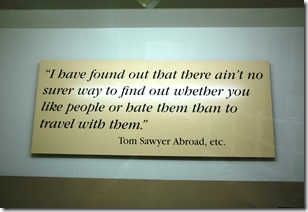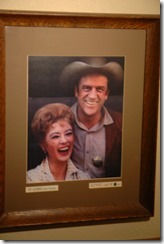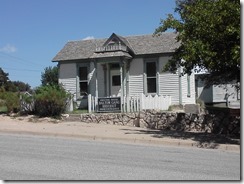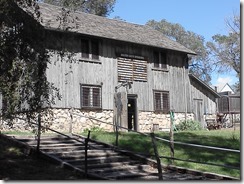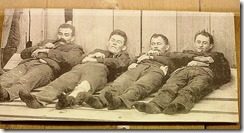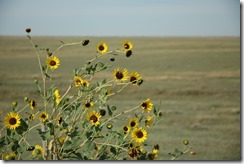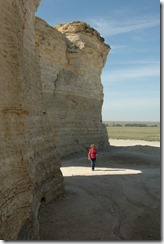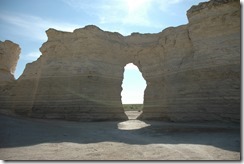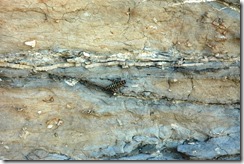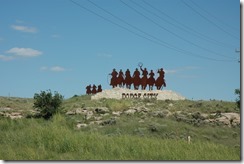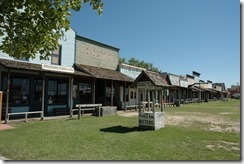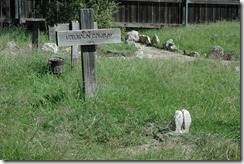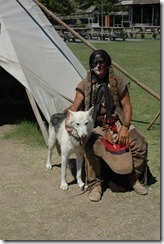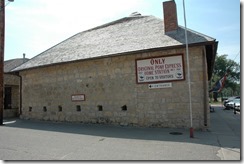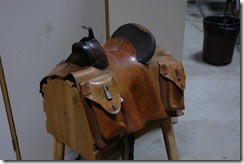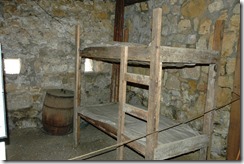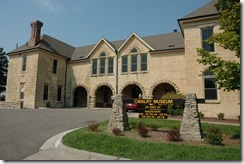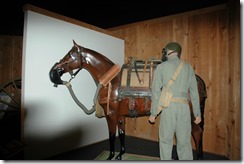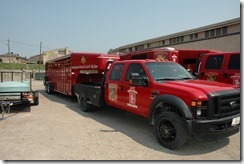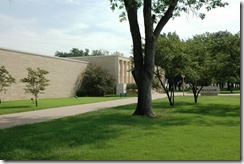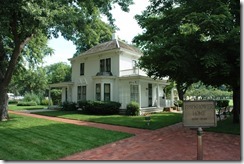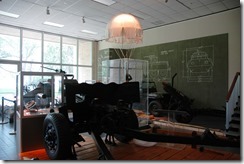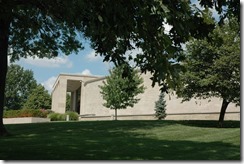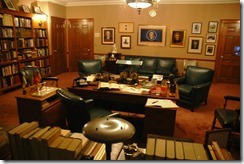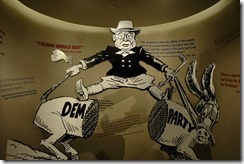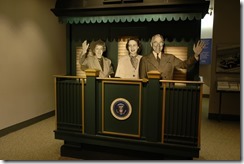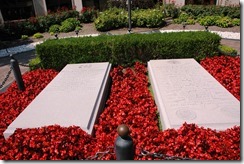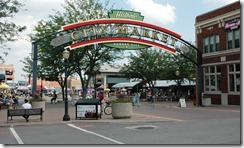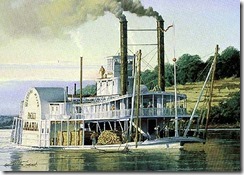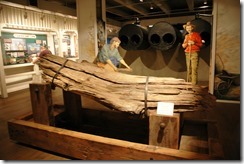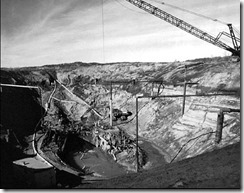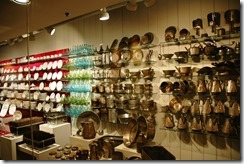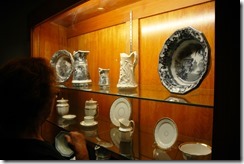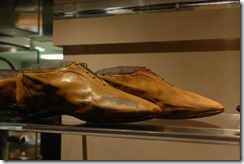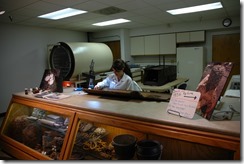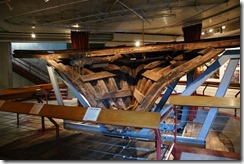We’re in Hannibal, Missouri, the place where Samuel Clemens (AKA Mark Twain) spent his boyhood years and provided the memories upon which he based some of his best-known works.
I thought this quote from Twain was truly prophetic:

I don’t know about the rest of the state, but Mark Twain certainly became an attraction in Hannibal and environs. There’s Mark Twain Cave, Mark Twain Lake, the Mark Twain Museum, the Mark Twain Boyhood Home, etc., etc. I haven’t done a study of Hannibal’s economy, but one gets the impression that without Mark Twain tourist attractions, Hannibal may have disappeared by now.
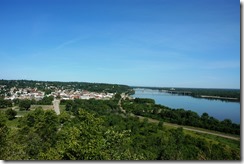
Hannibal is located on the Mississippi River. Twain described his childhood here as a wonderful time, and the main characters in some of his books were based on his friends and neighbors, only the names have been changed to protect the innocent, as well as the guilty.
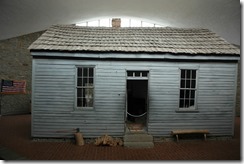
Twain was born in this cabin in 1835. The cabin was originally located in Florida, MO. (We’ve noticed that Missouri seems to have had trouble coming up with original town names: there’s also a Louisiana, MO, a Paris, MO, a Miami, MO and a Newark, MO. I won’t even mention that big city named after the state to the west. They apparently ran out of imagination on street names as well, We’ve seen T Road, M Road, TT Road, etc.) The cabin has been moved from Florida to a nearby state park and enclosed in a museum.
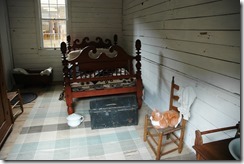
This bed is the only piece of original furniture in the cabin. Samuel may actually have been born in this bed. Then again, maybe not.
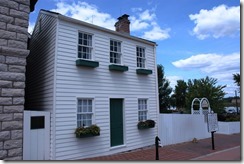
This is the boyhood home in Hannibal, which is about 20 miles from Florida (the town, not the state). The street and several houses related to Tom Sawyer and Huckleberry Finn have been preserved as a museum. Twain wrote those books based on his memories of life in Hannibal well after he left town.
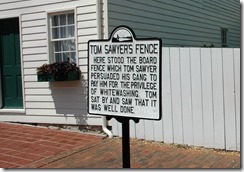
The “historical markers” on this street are interesting because they seem to refer to events and characters in the novels as real.

Rockcliff Mansion is a neat old house situated on, well, on a rocky cliff in a residential area of Hannibal. After he became a renowned author, Hannibal’s favorite son returned several times to visit. On one of those visits he stayed in this house. The mansion fell on hard times and sat vacant for more that 40 years. In 1967 it was somewhat restored and turned into a B&B and show house depicting the gilded age. It is currently owned by a retired Cuban-American banker from Miami who gives tours, runs the B&B and is doing additional renovation.
Okay, so we’re in Hannibal, on the Mississippi, and there’s a river boat. So we had to go for a boat ride.
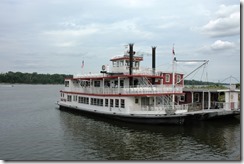
And guess the boat’s name. Go ahead, guess. I’ll wait.
Give up? It’s the Mark Twain! The excursion goes up and down river about a mile and provides a good view of another local attraction known as Lover’s Leap.
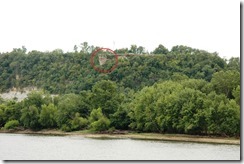
Our riverboat captain told the tale of how this spot got its name. It seems that many years ago an Indian maiden who lived on this side of the river fell in love with a young brave from a different tribe from the other side of the river. The maiden, the chief’s daughter, was told in no uncertain terms that the romance had to end, but young love, being what it is, knew no bounds. The brave, Falling Rock, would often swim across the river and rendezvous with his lover on this cliff. One night the chief spotted them and confronted his daughter and her lover. He told them that she had brought shame upon him and the entire tribe. He pulled an arrow from his quiver, and was about to shoot his daughter in the heart. Falling Rock grabbed his love and together they plunged over the cliff. But as fate would have it, they landed on a haystack and survived. They then fled the area, never to be seen again.
The chief was irate and sent out word across the area for anyone who sees the brave and his daughter to report back to him. They were never found, but the all points bulletin (as it were) is still in effect. As you drive along the local roads you’ll see the signs the chief erected: “Watch for Falling Rock”.
After almost five years of our odyssey, I’ll close this entry with a wonderfully appropriate quote from one of Mark Twain’s novels:
